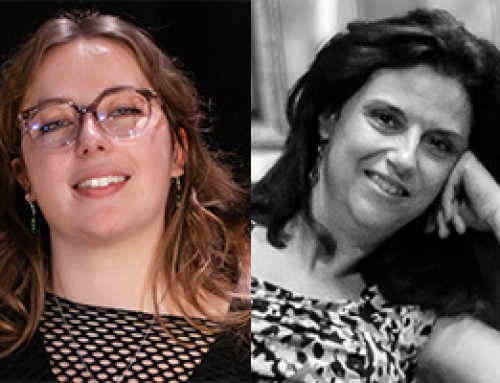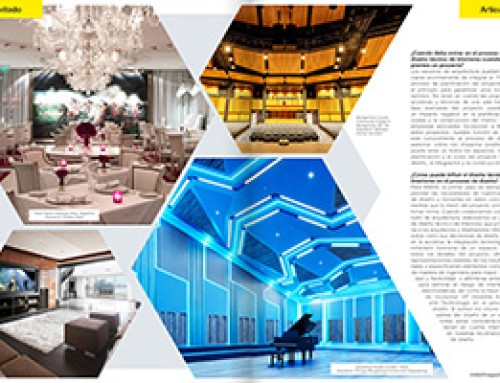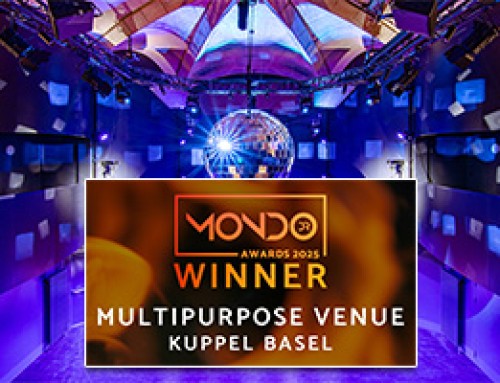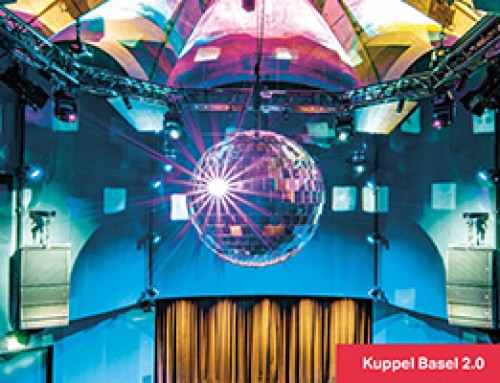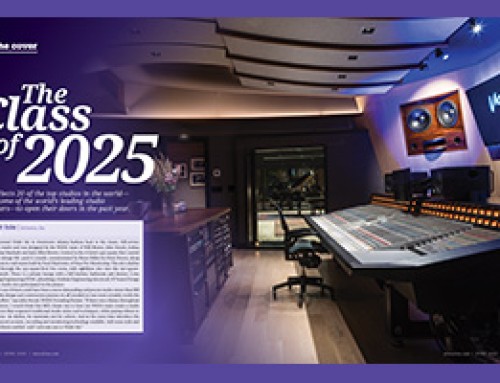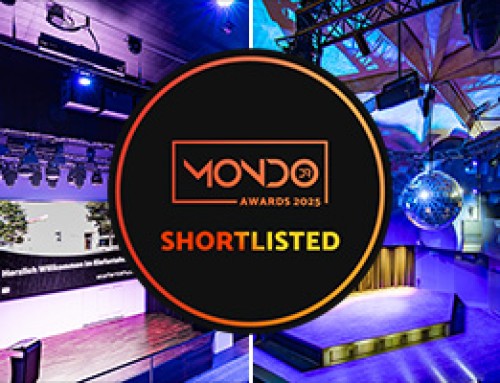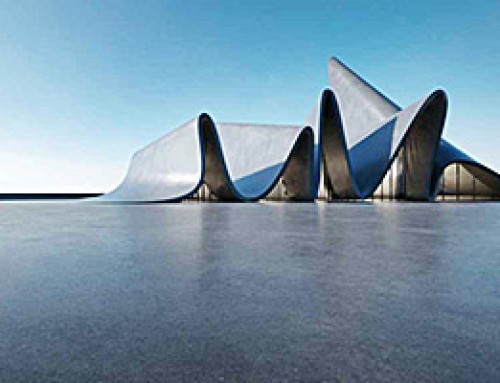Top Engineer Ann Mincieli Rules the NYC Music Scene with Her Jungle City Studios
in Music Creation, NAMM 2017, Pro Mixing
GRAMMY® Award-winner Ann Mincieli has traveled the world as an in-demand engineer for top artists, and most notably, as the long-time engineer and studio coordinator for Alicia Keys.
In 2011, Mincieli opened Jungle City Studios in the heart of Manhattan’s chic Chelsea district. Starting from the ground up, the studio was a labor of love that resulted in a John Storyk-designed multi-room facility that occupies the top two floors of a building and boasts incredible skyline views.
The studio blends an array of vintage and modern studio equipment and gear with an artistic design, which fits in nicely with Mincieli’s desire to bring New York City back to its former glory days as a top destination for recording.
Artists who have called Jungle City Studios home include Alicia Keys, Beyoncé, Depeche Mode, Jay-Z, and more. Learn more about Mincieli and her studio here on junglecitystudios.com.
The Women’s International Music Network (theWiMN.com) recently caught up with Mincieli to get some insights into her world as a top recording engineer, and to learn more about her impressive modern-retro NYC recording studio and how she uses Pro Tools to work her magic.
The WiMN: What do you love most about what you do?
AM: I have a very dynamic role in the music industry these days. I love finding new solutions and new ways to work while creating revenue streams for today’s new music industry business model. On the technical side of things, I love bringing an artistic vision to engineering. ‘See sounds and hear colors’ is my phrase I refer to a lot. All the gear––plug-ins, guitars, amps, keyboards, pedals––they are all crayons in your crayon box. There is a huge depth in the role of engineer that a lot of up-and-coming people need to dive into and learn.
The WiMN: What’s the most challenging part of being an engineer?
AM: There is no standard anymore in the way studios are setup and operate. There’s a lack of studios and engineers being unified in terms of certain technical aspects of running sessions and dealing with files. Years ago, every studio was somewhat unified and followed a protocol. We don’t have that anymore. Sometimes I get a session or a song that was poorly recorded in someone’s basement, half the files are missing, and they used two different microphones and mic pres, so I’ll spend four days putting the session back together.
Other times, files are spread across three hard drives and they’re missing in the session. Then I find out they live on someone’s computer who is currently in Colorado, so I have to pull out every trick in the book to get the song back to its original state!
The WiMN: You’ve played many roles in the world of audio during your career, starting at a young age. During your early years in audio, were there any engineers or producers who inspired you or perhaps encouraged you?
AM: Yes! Some of my favorites were Tony Maserati, Dana Jon Chappelle, Mick Guzauski, Michael Beinhorn, Manny Marroquin, Rodney Jerkins, and Babyface.
The WiMN: You’ve toured the world with high profile artists as a live audio engineer, and have also worked with them in the studio. Are there any particular projects or experiences that stand out as personal favorites?
AM: Two Alicia Keys albums, The Diary of Alicia Keys and As I Am. We made musical art, we painted the vision of each song that she and the producers had in their heads. I was nominated for a GRAMMY® Award for my work on the classic, timeless song “Empire State of Mind” by Jay-Z and Alicia Keys. Young Guru and I were the recording engineers and Kenny “Duro” Iffil was the mixer. I work with Young Guru and Duro every day in this industry and I feel like we’re the ‘East Coast Crew.’ We really dig into all the new ways that music, art and technology mix together. They are very innovative engineers, and they were also around 20 years ago when we all had to do recalls on 100-input desks and lock up 2-inch tape.
The WiMN: Your studio offers a nod to the past while keeping both feet firmly planted in the present, with a co-mingling of gear such as high-end consoles and software tools such as Pro Tools. Over the years, Pro Tools has become an indispensable component for pro studios such as yours. What are some of its essential features that help you do your job?
AM: What a great DAW––I love Pro Tools! It’s very user friendly, no matter what level you’re at. I love the fact that it feels like a tape machine. I have 11 different Pro Tools Rigs and configurations to fit my clients’ needs, and for my work with Alicia Keys in the studio and on the road. There’s a new shortcut for auditioning playlists that I love, and the advanced and quick fade editing is great. Also, offline Bouncing, Clip Gain, Clip Transparency––which gives you better visuals when lining tracks up––Track Freeze and Track Commit. I use Quantize and conforming Audio a lot, too. I also love a lot of the Virtual Instruments and I use them every day.
The Velvet/Rhodes plug-in is one of my favorites. All the plug-ins are incredible, especially Revibe. I use Elastic Audio a lot to change tempos within my sessions. I also love the new converters; there’s a lot less latency, and sonically, they’re such an improvement from the old 192’s. I integrate a lot of Avid gear in my studio every day. I have a Euphonix Fusion S5 console and there’s a 32 input Icon in both my Mix/Overdub rooms.
The WiMN: There’s a nice array of vintage instruments on your studio’s gear list. Were there any special instruments you knew you just had to have when you opened your doors, and is there a special story behind any of them?
AM: I have an EMI TGI-12345 Mark IV console. If you know the history of the EMI consoles, they were distributed by EMI to all EMI studios in Europe only. There were only 14 ever made. I bought mine from AR studios, which had purchased it originally from EMI Brazil. Just recently, I watched Depeche Mode mix their whole new album Spirit (2017 release date) on the EMI console.
I have 30-plus vintage guitars, 20 vintage amps, over 200 guitar pedals, and various keyboards––from CS-80’s, to Rhodes, Wurli’s, Moogs, and everything in between. There’s a myriad of mic pre’s to cover and color the sonic art of making a record. I have one of the first Hofner 500/1 violin basses from 1956. I recorded every song on Alicia Keys’ As I Am album using that bass. I have a vintage bass amp called a Versatone that was Carol Kaye’s from the Wrecking Crew. I have an Ampeg B15 bass amp signed by Jess Oliver, who owned and made the patent of that amp from 1967 to 1969. I went to his house on Long Island before he died and bought it personally.
I have a Steinway Model B and K52 Piano that sound incredible. I own a lot of this gear because it’s part of how I engineer, and I love that clients are coming to my studio specifically to use it. We’re more than a studio with just a console and tape machine. I want my studio to be known for having this gear and providing a sonic culture to the industry and New York.
The WiMN: Designing a world-class studio complete with vintage consoles, a grand piano, and John Storyk-designed acoustical treatments at a time when many NYC-based studios were selling their spaces must have required a lot of determination and a leap of faith. During that time, what did you do to get through any uncertainly you may have had?
AM: I never thought about not succeeding. I really did my research and talked to a lot of artists, producers, engineers and label people to get input from everyone. My motto was ‘Go big or go home!’ I didn’t skimp on any aspect and when you look at the design from HVAC to 3-phase power, the panels and cable routing schemes, it’s really a work of art. If I would have got caught up in thinking too hard about it, I would have stumbled and fallen. If I look back and think about it now, I would have never done it again because of all that went into it! We had more than 80 workers; it was an all-star team and a lot of work. I am very thankful to all involved every way and every day.
The WiMN: How do you view today’s landscape in terms of opportunities for women starting out in audio? Do you have any advice for young women looking to find their way?
AM: I really just think you need to remain focused. Today, there are more opportunities than ever. Just focus on being great and better then everyone. I was never prohibited from doing anything in this industry. If you focus on being great, then no matter who you are and what you want to achieve, your success will follow.







